
Welcome to the new series of Posts from Your Archives 2023 where I will be sharing posts from the last six months of 2022 I have selected from the archives of willing participants. If you wish to be included the information is at the the end of the post.
In this second post from Diana Wallace Peach I am sharing a post that she wrote as part of the team at Story Empire. It is the second post in a series of three and your can find the first one here. Writing the End Part One
Writing the End – Part II by D.Wallace Peach

Not all types of endings are mutually exclusive, and the goal isn’t to pick one kind of ending and force your story to conform. Instead, it’s to focus on what you want to emphasize as the most important element of your book, what final experience you want to give your readers as they close the last page. It’s how you fulfill the promise you made at the story’s beginning.
There are 8 common ways to end a story.
- Resolved Ending
- Unresolved Ending
- Ambiguous Ending
- Surprise Ending
- Tie-back Ending
- Altered World Ending
- Altered Character Ending
- The Epilog
Today I’m going to chat about the first four.
1. Resolved Ending

A Resolved Ending is the most common way to finish up a book and the perfect choice if you want everything wrapped up and tied with a bow, happily or miserably ever after. Authors frequently employ this type of ending when writing standalone novels or the final book in a series, and it easily crosses genres.
Romances rely heavily on Resolved Endings, and readers expect those Happily Ever After wrap-ups after all the emotional turmoil. Mysteries are much the same where, despite all the confusion and red herrings, the details are cleared up by the last page.
The popularity of these genres may be, in part, due to their resolved endings, which most readers find highly satisfying. These endings conclude plotlines and tie up character threads. There’s no conjecture needed and few questions left unanswered. The reader knows what happened, and has a good idea of what’s ahead for the characters.
Keeping track of plotlines and questions raised by the narrative is a good idea. Eventually, you’ll need to address how Aunt Matilda ended up in the basement and whether Rupert found his missing iguana even if those aren’t major parts of the storyline.
That said, even with Resolved Endings, there’s a limit as to how much detail you need to wrap up. Rather than adding whole chapters to make sure you’ve answered every question the story raised, you can allow readers to reach some conclusions on their own. It’s also acceptable to resolve some of the subplots right before the climax. Perhaps Rupert finds his iguana the day before the heist goes haywire!
2. Unresolved Ending

An Unresolved Ending is the opposite of a resolved ending. The overarching plot remains unfinished, and the writer leaves the final outcomes of some of the characters’ arcs unknown, especially that of the main protagonist.
This type of ending is well suited to a series or serial. It leaves questions unanswered, tasks undone, and conflicts lurking in the mist. If done well, it should raise a desperate desire in the reader to know what happens next. A new hook at the book’s conclusion is vital and a unique aspect of this type of ending. It deserves as much careful crafting as the hook in the first chapter.
Cliffhangers at the end of books are an option with serials, and readers often have mixed feelings about them. Some readers love the excitement and anticipation, while others hate being left hanging, which they’ll let you know in their reviews!
Serials (one long story told over a number of books) may leave numerous unresolved plotlines and character goals as they work up to an epic Resolved Ending. These are common in trilogies, especially in fantasy and science fiction, but they’re by no means limited to those genres. And they often don’t stand alone. The first two books of Tolkien’s Lord of the Rings are good examples of serials with unresolved endings.
Series (versus serials) often require endings with more closure and, in many instances, they can stand alone. Readers of series generally understand that parts of a story will remain unresolved when they reach the last page. That said, it’s important for writers to keep in mind that not every element in the story should be left swinging in the wind. In general, a good rule of thumb for writing Unresolved Endings is to tie up subplots while leaving the main plot open as a hook into the next book. The assassin is dead, and the hostage has been rescued, but the terrorist mastermind still has the nuclear codes. Think about what threads you want to tie up, what doors you want to leave open, and what questions you want to pose to draw the reader onward.
3. Ambiguous Ending

Ambiguous endings can be thought-provoking and linger in a reader’s mind for days, or they can frustrate a reader who expects a tidy resolution. They’re effective if you want your readers to reflect on the meaning of your book, ponder what actually happened, or muse over what might happen next.
With ambiguous endings, there’s no next book. The conclusion is unclear or unknown. The author withholds information or allows several logical explanations to exist at once, leaving the reader with questions and an opportunity to speculate without having a right or wrong answer.
- Was it murder or suicide?
- Did the government kill the rebel or let him go?
- Is the narrator reliable, confused, or completely mad?
Not all genres work well with these endings, but many do, especially complex stories about “things we can’t or don’t know.” Books with unreliable narrators fall into this category if the reader is left questioning the character’s interpretation of events and what really happened.
These stories still need a climax, and planning this type of ending from the start is essential in preparing the reader for the lack of a full resolution. In these stories, allowing different interpretations should be more satisfying to the reader than having a definitive explanation.
4. Surprise Ending

If you lead your readers to believe a book will end one way, and then you add a big old plot twist or completely unexpected turn of events, you’ve written a surprise ending. Sometimes, the whole story is flipped onto its head with a previously-believed fact turning out to be false.
- The murder victim isn’t really dead
- The jewels they’ve been fighting over are all forgeries.
- The organ donor was her estranged father.
- Innocent old Aunt Bettina is the werewolf!
Surprise Endings are good for toying with a reader’s emotions. Depending on the type of story, surprises can quickly lift a reader’s spirits or send them crashing to the floor. Either way, they create a dramatic shift in a reader’s experience.
Mysteries often include a twist, and fans of the genre love them, but few readers enjoy twists that show up out of nowhere. Details have to lead the reader in one direction, while at the same time, the writer must lay the groundwork so that the conclusion, while unexpected, still makes logical sense and brings the story to a satisfying end.
If a Surprise Ending is well-executed, the author won’t need a character to wrap up the book by explaining the clues, twists, and plot to the other characters. Instead, the action, character, and twist will speak for themselves.
**
That wraps up the Part II of our exploration of endings with four common ways to end a book. Next time Writing the End Part 3 we’ll tackle the other four types of endings before we head into the elements that make up a satisfying ending.
Which of these endings do you prefer to write or read? If you think back to some of our favorite books, did they fit any of these common types?
Happy Writing!
©D.Wallace Peach 2022
My thanks to Diana for inviting me to share her posts including from Story Empire which is a fantastic site for authors, and I know she would love to hear from you.

About D.Wallace Peach
Best-selling author D. Wallace Peach started writing later in life after the kids were grown and a move left her with hours to fill. Years of working in business surrendered to a full-time indulgence in the imaginative world of books, and when she started writing, she was instantly hooked. Diana lives in a log cabin amongst the tall evergreens and emerald moss of Oregon’s rainforest with her husband, two dogs, two owls, a horde of bats, and the occasional family of coyotes.
For book descriptions, excerpts, maps, and behind the scenes info, please visit:
D.Wallace Peach Books
A selection of books by D.Wallace Peach
One of the reviews for the Necromancer’s Daughter
As a few other reviewers of The Necromancer’s Daughter have noted, I don’t usually read fantasy. However, I was so intrigued by the premise, I couldn’t resist: a humble, crippled necromancer named Barus brings Aster, a stillborn princess, back to life and raises her as her own–until she is called to fulfill her royal destiny.
I’m happy to say, I was well-rewarded for my time investment in Barus and Aster’s story. To begin with, the writing is superb: vivid, polished, and fluid, with enough detail to immerse the reader in the fantasy world without belabored world-building. In addition to the writing, the masterful characterization kept me reading. From the point-of-view characters to the bit players to the “sword carriers,” these are living, breathing people who inhabit the fantasy world the author has created.
The novel is told from three points of view: that of Barus, Aster, and Joreh, a young man who turns out to be the son of Aster’s sworn enemy. The use of multiple points of view provides different perspectives on the events of the story–a variation on the hero’s journey–thereby ensuring reader identification with each character, as well as building narrative tension. The use of multiple point-of-view characters also adds depth and complexity to the novel’s major themes of good versus evil, the lust for power, personal autonomy versus destiny, and the nature of life and death.
The novel’s main timeline is in the winter, and a particularly brutal winter it is. Wind-blown snow isn’t mere window-dressing, however. The author skillfully uses the frozen landscape to reinforce Aster’s “otherness” and fragility as someone who has been raised from the dead. Moreover, blizzard conditions and frigid temperatures pose additional challenges to overcome, over which neither she nor her antagonists have any control.
Dragons figure prominently in The Necromancer’s Daughter, which came as no surprise. However, the way they were portrayed did surprise me. The descriptions of what the dragons looked like, what they sounded like, and how they behaved were so realistic, not only did I believe they existed, they became one of my favorite elements of the novel.
I was also surprised by the details of necromancy practiced by Barus and then by Aster. The effect of necromancy on the necromancer and the light in which it was portrayed played against the trope of the obsessive mad scientist defying God to raise the dead. Their practice of necromancy was presented in an altruistic light–and the necromancer paid a physical price. I greatly appreciated the way necromancy was presented in all its complexity. As to be expected, Aster’s enemies believe it is the work of the devil, while Barus and Aster view it as a form of healing, in the way that medical treatment is a form of healing: interference with a natural process of a body that has been injured or become seriously ill. The question of where the line is between life and death and how far medical science should go to keep someone from crossing that line permanently is very much with us today.
I can confidently recommend The Necromancer’s Daughter to readers who love fantasy and to readers who appreciate character-driven, thought-provoking fiction. Kudos to D. Wallace Peach for this achievement!
Read the reviews and buy the books: Amazon US – And : Amazon UK – Follow Diana: Goodreads – Authors Website: D.Wallace Peach Books – blog: Myths of the Mirror – Twitter: @Dwallacepeach

How to feature in the series?
- All I need you to do is give me permission to dive in to your archives and find two posts to share here on Smorgasbord. (sally.cronin@moyhill.com)
- Rather than a set topic, I will select posts at random of general interest across a number of subjects from the last six months of 2022. (it is helpful if you have a link to your archives in your sidebar by month)
- As I will be promoting your books as part of the post along with all your information and links so I will not be sharing direct marketing or self- promotional posts in the series.
- If you are an author I am sure you will have a page on your blog with the details, and an ‘about page’ with your profile and social media links (always a good idea anyway). I will get everything that I need.
- As a blogger I would assume that you have an ‘about page’ a profile photo and your links to social media.
- Copyright is yours and I will ©Your name on every post… and you will be named as the author in the URL and subject line.
- Previous participants are very welcome to take part again.
- Each post is reformatted for my blog and I don’t cut and paste, this means it might look different from your own post especially if you are using the block editor
N.B – To get the maximum benefit from your archive posts, the only thing I ask is that you respond to comments individually and share on your own social media.. thank you.




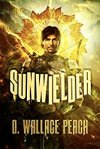
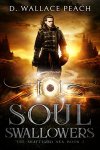

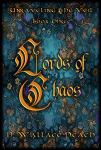
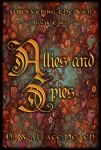
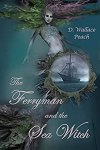

Pingback: Smorgasbord Blog Magazine – Weekly Round Up 6th – 12th March 2023 – Big Band Era, Podcast, Health, Book Reviews, Bloggers and Funnies | Smorgasbord Blog Magazine
Ending a story let alone a series isn’t easy. You want readers to come back to read the next installment but you also want them to get satisfaction. I did leave a cliffhanger in my new series, which most readers were okay with, only a few didn’t like it. [shrug] Can’t win them all. Great article.
LikeLiked by 1 person
Thanks Luciana and it is a balancing act as you say. Enjoy your week.. ♥
LikeLiked by 1 person
A thought provoking piece.
I’m not sure which sort of ending I like reading?
Of course writing children’s books is a little different.
Enjoyed this post very much. Thanks for sharing
(Off to find out about Story Empire now)
LikeLiked by 1 person
Thanks Sue and I know you will find something interesting over on Story Empire..♥
LikeLiked by 1 person
This was a great post by Diana! Thanks for reposting, Sally!
Yvette M Calleiro 🙂
http://yvettemcalleiro.blogspot.com
LikeLiked by 2 people
Thanks for stopping by Sally’s and for the kind comment, Yvette. Have a lovely afternoon and Happy Writing. ❤
LikeLiked by 2 people
Thanks very much Yvette ♥
LikeLiked by 1 person
This is a wonderful post. Very informative for writers of all sorts. Thanks for sharing this, Sally!
LikeLiked by 2 people
Thanks for the visit, Beem. Sally’s giving our Story Empire crew a little extra love this morning. It’s a pleasure to see this post getting a second look, especially since the series is wrapping up soon. Happy Writing!
LikeLiked by 2 people
♥
LikeLiked by 2 people
Thanks Beem.. terrific post x
LikeLike
Great to see this post again! I wonderful explanation of endings 🙂 xo
LikeLiked by 3 people
Thanks for stopping by Sally’s, Denise. I was tickled that she chose a Story Empire post to share. Talking about writing is always a joy, and for me, it never gets old. Have an amazingly productive week. Happy Writing!
LikeLiked by 2 people
So useful.. thanks Denise hugsx
LikeLiked by 1 person
Thanks to Diana for this remarkable posting. I really love Story Empire with it’s always very useful information. hugsx Michael
LikeLiked by 2 people
Thanks so much for sharing Sally’s post, Michael. She’s wonderful about supporting authors in our community and so are you! Have a lovely week, my friend. 😀
LikeLiked by 1 person
♥
LikeLiked by 1 person
Thanks Michael Hugs
LikeLiked by 1 person
Reblogged this on https:/BOOKS.ESLARN-NET.DE.
LikeLiked by 2 people
Thanks for sharing Michael..hugsx
LikeLike
Thanks as well for the reminder, Sally! Enjoy your evening! xx Michael
LikeLiked by 2 people
This is a wonderful series of posts by Diana, and she sure knows how to end a book! Thanks for sharing, Sally. Hugs 💕🙂
LikeLiked by 3 people
Thanks for stopping by Sally’s, Harmony. Story Empire has a wealth of information for writers and I’m so glad to be a contributor. It was a delight to see this post here. Have a lovely day and Happy Writing. 🙂
LikeLiked by 3 people
She does Harmony and happy to share ♥
LikeLiked by 2 people
This is a great post Diana, Sally! Look forward to part 2.
One of my favorite endings is the “Lost the last chance to change” which I guess is a resolved ending that feels unresolved and can be maddening!
LikeLiked by 5 people
Ha!. That’s awesome that one of your favorite endings is also maddening for you, Dorothy. It sounds like you enjoy books with a slightly darker tone. One of the fun things about writing this series of posts was thinking about the books I’ve read and the author’s decisions about their endings. Thanks for stopping by Sally’s to check out the post. Have a beautiful day. 🙂
LikeLiked by 4 people
I do like a little dark sometimes, and I’ll root for the underdog as well!
LikeLiked by 3 people
🙂
LikeLike
Thanks Dorothy… and that comes across as maddening but so often happens in real life too ♥
LikeLiked by 4 people
Oh yes, far too often!
LikeLiked by 3 people
Thanks for re-posting this thoughtful piece on book endings by Diana. Her usual sharp observations come through and I find according to this post, I use a mix of resolved and unresolved for my endings: the largest pieces of the puzzle are tied up but I leave one little niggling thread hanging…for the next book.
LikeLiked by 4 people
Thanks for dropping by Sally’s, Noelle. Yes, I’d say that’s exactly what you do with your series, and I know, from having read your work, that you handle endings well. 🙂 I’m glad you enjoyed the post, my friend, and congrats on your coming book! ❤
LikeLiked by 4 people
Thanks, Diana. Everything has been held up with Hubs in the hospital. I just couldn’t read through the author’s copy for printing errors. Hopefully this week!
LikeLiked by 4 people
There’s no rush, Noelle. Family comes first. I hope your guy is doing well and things are starting to settle down for you. Hugs.
LikeLiked by 3 people
Sorry to hear Noelle.. I hope he is doing okay… ♥♥
LikeLiked by 3 people
Thanks Noelle.. and always good to have a thread to entice you to buy the next book… no good series on TV leaves without that hook..hugsx♥
LikeLiked by 3 people
I love this series of Diana’s. Nice to see it here. Thanks, Sally.
LikeLiked by 4 people
Thanks, Staci. I enjoyed writing this series and was thrilled when Sally chose this post to share. Have a wonderful week and Happy Writing! 🙂
LikeLiked by 4 people
Thanks Staci hugsx
LikeLiked by 3 people
This was such an informative post from Diana. She gave lots to think about for creating great endings. Thank you for sharing, Sally!
LikeLiked by 4 people
Thanks for stopping by Sally’s, Jan. I’m so glad she shared this post. Another fun shout-out for Story Empire as a whole. Have a wonderful week, my friend, and Happy Writing. ❤
LikeLiked by 3 people
A wonderful post Jan and delighted to share ♥
LikeLiked by 2 people
Lovely to see Diana here today, Sally! This particular series is a super one, and very helpful for newer writers like me. Thanks for sharing it today, and Diana, well done, my friend. I learn something new from all the great posts on SE, and this series on endings is no exception! Great job! 😀 ❤
LikeLiked by 4 people
Thanks very much Marcia and SE Posts are great ♥♥
LikeLiked by 4 people
I agree 100%! 😊
LikeLiked by 4 people
Pfft. “Newer writers like you.” You’re so funny, Marcia. As I recall, you were part of SE and sharing your knowledge with newer writers like me! Lol. That’s one thing I love about this community; we are all delighted to help each other along. Sally’s a great example of that too. Hugs, my friend, and thanks for starting my day with a laugh. ❤
LikeLiked by 4 people
Well, to be fair, I’ve been writing less than ten years, and know many, many of my writing friends have been at it a lot longer than that. I also know that I’ve learned a lot from everyone in our community, and especially from being part of, and continuing to follow, Story Empire. However, I still think of myself as being pretty new to it all, and always looking to learn more, especially from writers I admire, like YOU! Glad I gave you a laugh to start your day, though. And hugs back atcha! 🤗❤️
LikeLiked by 2 people
I haven’t been writing much longer than you, Marcia. And we’re life long learners. It’s exciting.
LikeLiked by 2 people
A comprehensive article from Diana. She knows what she is talking about. ♥
LikeLiked by 4 people
Thanks Olga ♥
LikeLiked by 3 people
Thank you so much for the lovely comment, Olga. This is part of a longer series and a learning experience to pull together. I’m delighted that Sally chose this one to share. Happy Writing! ❤
LikeLiked by 3 people
A most informative and useful post. Many thanks.
LikeLiked by 4 people
Thanks Viv.. xx
LikeLiked by 4 people
Thanks for stopping by at Sally’s, Viv. I’m delighted that she chose this post to share. I learned a lot as I wrote it, and it’s fun to talk shop with everyone. Have a great day and Happy Writing!
LikeLiked by 4 people
This was a great post to revisit, Sally. Diana is a talented writer. Her post is packed with beneficial advice and tips. Thanks for sharing! xo
LikeLiked by 4 people
I totally agree Jill.. love Diana’s books. xx
LikeLiked by 3 people
Thanks, Jill. Sally always seems to find the good ones to share. I love “talking writing” and hope that some of the ideas resonate with readers. Every writer and story is different, which makes all this extra interesting and fun. Happy Writing, my friend.
LikeLiked by 3 people
Thank you, Sally, for sharing this post. Diana is a gifted and wise writer. I found her post particularly insightful. Hugs to you both. 🤗
LikeLiked by 4 people
Thanks very much Gwen ♥
LikeLiked by 3 people
Thanks, Gwen, for swinging by Sally’s and for the lovely comment. I’m honored to be here, and it’s a delight to get some additional exposure for Story Empire as part of the post. I always learn something new as I prepare my posts and I love that! Happy Writing. ❤
LikeLiked by 4 people
I love Diana’s writing – properly love it! – and it’s generous of her (and the others at Story Empire) to share their tips and tricks to make our writing as powerful and effective as possible. Many thanks for giving this one some more exposure, Sally.♥♥
LikeLiked by 4 people
Thanks Alex and I agree SE is a wonderful site and Diana’s writing is very special. ♥♥
LikeLiked by 4 people
Thank you, Trish, for the kind comment. I’m sitting here with my morning coffee and positively glowing. 😀 There is so much to learn about this thing we do, and I love that. Never a dull moment for life long learners. I hope you’re doing well. Hugs, and Happy Writing!
LikeLiked by 4 people
♥♥
LikeLiked by 2 people
Reblogged this on Judith Barrow and commented:
Today’s post from Sally on her Smorgasbord Posts from Your Archives 2023- ‘Lucky Dip – #StoryEmpire – Writing the End by D. Wallace Peach, is indeed a lucky dip for all writers.
LikeLiked by 4 people
Thanks very much Judith ♥
LikeLiked by 3 people
A great choice, Sally. Many thanks to you both. xx
LikeLiked by 3 people
Thank you for the wonderful intro, Judith, and the reblog. Sally found a good one to share. I love being a part of the Story Empire crew and sharing tips and experiences. We never stop learning. 🙂 Happy Writing!
LikeLiked by 2 people
That is so true, Diana – we never stop learning. I love sharing these informative and interesting posts that Sally finds. x
LikeLiked by 3 people
♥♥
LikeLiked by 2 people
Such great advice from a master storyteller, Sally – thanks to Diana for this xx
LikeLiked by 4 people
Thanks Toni.. ♥
LikeLiked by 3 people
Thank you for the kind comment, Toni. You’ve started my day with a smile. Happy Writing!
LikeLiked by 3 people
I’d read this before at the Story Empire. Diana, as always, succinctly does a great job of how to write endings. ❤
LikeLiked by 4 people
Thanks, Debby. I always learn something as I pull these together. I’m glad you enjoyed it. Delighted to see you here at Sally’s. Now, back to your vacation. 🙂
LikeLiked by 3 people
Lol, thanks again Diana. Heading right back! ❤
LikeLiked by 3 people
Thanks Debby ♥
LikeLiked by 3 people
❤
LikeLiked by 2 people
Wonderful post to revisit.
LikeLiked by 4 people
Thanks for swinging by Sally’s, Craig. The series continues! Happy Writing. 🙂
LikeLiked by 3 people
Thanks Craig x
LikeLiked by 3 people
This is an excellent post to share. Endings are critically important to readers!!
LikeLiked by 5 people
Thanks for stopping by Sally’s, Liz. As I recall, you were working on an ending at the time I wrote this. I hope it turned out well! Happy Writing.
LikeLiked by 3 people
You’re welcome, Diana. You have a good memory! The ending needs a few more drafts, but the vision is clear.
LikeLiked by 3 people
With you totally Liz… it can made or break a story.. xx
LikeLiked by 3 people
Great to see Diana here. Her posts on Story Empire are always well-thought-through and beautifully executed. Congratulations to Diana, and thanks to you.
LikeLiked by 4 people
Thanks for the kind comment about my posts, John. It’s a delight to see one over here at Sally’s. 😀
LikeLiked by 3 people
It is. 😁
LikeLiked by 2 people
I agree John… hugsxx
LikeLiked by 3 people
😁
LikeLiked by 1 person
Thanks so much for sharing the post, Sally. I’m honored to be a part of the Story Empire team and to contribute to their blog. I learn every time I pull together a post about writing for our community. Thanks for helping to spread the word and for everything you do to support other writers, bloggers, and readers. Hugs, my friend. 🙂
LikeLiked by 5 people
Delighted to share Diana SE is an excellent resource for all writers at every level.. ♥♥
LikeLiked by 3 people